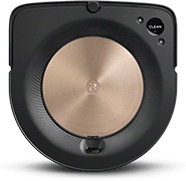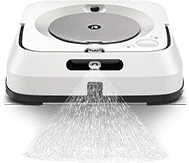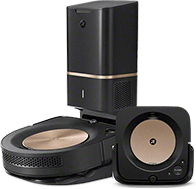How to Make a Robot at Home (From the Makers of Robots)
Want to know how to make a robot? We have the resources for you.
Every April, iRobot looks forward to National Robotics Week, where we get to celebrate… ROBOTS – how to make them, what makes them so fascinating, and how they’ll shape our future. Not to mention highlight and guide all the wonderful kids in STEM in how to fail forward in the most spectacular way while learning.
Whether you’re a robotics hobbyist looking for some DIY projects, a parent or teacher looking for robotics projects, tours or even children’s books on STEM for your child or students, this is a good place to start.
What You Need to Know About National Robotics Week
We here at iRobot founded National Robotics Week back in 2010 (though we started working on it in 2009 until it was passed by a Congressional resolution), as part of our philanthropic outreach and dedication to the development of STEM and robotics education.
(“What is STEM education?” you might ask. Check out our blog blog post: What Is STEM Education & Why Is It Important?)
Our aim is not only just to show that robots are already a major part of our lives, but to educate children on how they can be involved within the industry.
“Absolutely anybody can be a part of building a robot. There are so many moving parts…” Lisa Freed, iRobot’s STEM Program Manager, who runs the STEM outreach program at iRobot, recently spoke on just how wide the industry is. And how, even if you’re not an engineer, you can be a part of making robots come to life.
National Robotics Week is a tribute to that, and to getting kids excited for the world of robotics, no matter their interests and skills.
For those first nine years, our 350 National Robotics Week events were held in-person, spread across all 50 states. The pandemic pushed many of those events online, which has provided an exciting opportunity for us to reach even more children and educators across the country, from the comfort of our homes. This year, we are seeing a nice hybrid of both virtual and in-person events, again spread across all 50 states.
What kind of events are a part of National Robotics Week?
With 350 events in our pocket for just one year of robot celebration, there’s so much to choose from. Really, the events you partake in are up to you and your intended level of involvement- and of course the age and education level of the kids you’re guiding.
For instance, we provide resources on how to code a robot for kids (it’s simpler than it sounds), virtual tours of our robot museum, and we even wrote a children’s book to engage even the littlest of minds.
Some of our biggest events for 2022 include:
- A Robot Block Party – with demos, speakers, workshops, and of course, robots
- Robotics Lab with Abacus Robotics – driving robots, 3d printing, building, and programming
- Robotech Festival – short workshops on robotics for kids of all ages
Resources for celebration in your home and classroom
One of the best things about National Robotics Week is that you can celebrate it from anywhere, in a variety of ways.
But we know that sometimes a little guidance and a few helpful resources go a long way in setting up fun and easy robotics (or even advanced robotics) activities.
We have a full resource library at your disposal, and we can also send schools on virtual tours or provide physical copies of our children’s book.
But if you’re looking to explore on your own, here are some helpful resources:
- Follow along story time: how to build a robot
- Our collection of hands-on science projects
- A site displaying over 200 robots from all over the world
- Virtual backgrounds to decorate your virtual event with
- The iRobot Learning Library
While we’re in the full swing of celebration (really, we like highlighting robotics and STEM the whole month – year, actually – rather than just the week), we want to give you a first-hand look into what it really takes to build a robot, who can get involved, and how.
What 3 things make a robot?
Ask any child to draw you a picture of a robot, and they’ll probably create the stick and box figures of the cartoons and fiction movies we’re all familiar with (notice that they’re a bit humanoid).
That’s how we’ve always imagined robots, and the concept that they could be anything else seems foreign.
Maybe it’s because we still think they’re far off in the future. Or maybe it’s because there is no hard definition of what makes a robot, or awareness of all the various robots that already live in our every day.
Some remote controlled robots take us to the moon or Mars (or even further). Some
This is where the challenge is, and what we’ve taken on with National Robotics Week.
We want to expand the knowledge of what a robot is, with a more strict definition that might look a little something like this:
“A robot is any autonomous machine with the ability to sense its own environment, perform actions based on set instructions, and make decisions based on its own computations.”
Our Roomba® robot vacuum is a great example of this, as it uses sensors while moving around a space, avoiding objects (even objects like socks… or pet droppings), backing away from the edge of “cliffs” like your stairs, and bumping away from furniture.
While you might just look and see our robots doing their job, inside that robot is an intelligence system so thoughtfully executed, that it understands exactly when it’s covered the entire area or determines if it needs to pass over a particular area again.
Is that what it takes to be a robot?
Some intelligence (in a software sense)?
Well, every robot should have these three things to qualify as such:
Moving parts – without gears churning, motors powering, parts pumping, there’s no real life to it
A brain – of course, no robot will have a human brain, but it should have some level of cognitive ability. In other words, it should be able to make computations that affect decisions, such as what suggestions it provides the user or what direction it moves.
Sensors – humans have millions of sensors that allow us to make assessments of our surroundings, and therefore make decisions (or at least observations). Robots need sensors to do the same.
Let’s dive a little deeper into a few of those, and why they’re so vital in making a robot.
Sensors on a robot
There are dozens of different types of sensors available in robotics, depending on what your robot is meant to do.
For instance, you could use proximity sensors to gauge the distance between the robot and an object (sparking other systems within the robot into certain actions, such as stopping or turning).
There are also:
- Light sensors
- Temperature sensors
- Contact sensors
- Distance sensors
- Pressure sensors
And so many others.
Essentially, a sensor detects certain changes, properties, or even events that happen within a space or environment to produce a signal that the robot’s “brain” can interpret. This signal sparks action within the robot much like signals from human sensors do in our own bodies.
How sensors work:
All sensors have both an input and an output.
The input measures an environmental entity, such as light or pressure.
The output is the change in the electrical property of the sensor element. For example, the voltage or current of a light sensor may change with the presence of ambient light.
“For a robot to be a robot, it needs to respond to its environment. Sensors are how the robot gets that information, but what it does with that information is critical. It’s just as important.”
 The robot brain
The robot brain
Robots have been around for many years, but throughout those years, much of what we were capable of doing was simply programming the robots to sense and respond.
It’s much like a language. One sentence prompts a reaction sentence or a physical action (or emotion – but robots don’t have that, yet).
Now, we’re starting to get to a place where the hardware matches our artificial intelligence capabilities – allowing robots to learn.
That last sentence conjures a few science fiction images of robots taking over the world, but what’s really true about artificial intelligence is that it’s still software. It’s still programming. The robots still have parameters.
The difference between sensor and response and artificial intelligence is that the robots start to improve their techniques, responses, or suggestions based on their environment.
Sure, they can connect to other devices and machines through the Internet of Things (IoT), but they still need the human element and instruction, relaying messages and instructions (and even learning) within parameters we set.
 Can anyone build a robot?
Can anyone build a robot?
Any person who wants to learn how to make a robot can do it. Absolutely anyone can build a robot, and there are loads of professions within the industry that don’t require an engineering degree or anything close to it.
And it’s absolutely true, because making a robot isn’t just about smart engineers and roboticists. It’s about creating the right hardware and software, sourcing the right parts, and designing the robot itself.
“It’s just like any group project you work on in school…” says Cara Brooks, iRobot’s STEM Program Coordinator, remarking on how many people it really takes to build a robot.
“Who is the lead? It’s always important to make sure that someone is there to keep the lines of communication open– like a project manager… Even if you’re building a Lego robot, how do you make sure you have everything you need? That’s the job of sourcing.
Our design researchers are really interesting, because their job is never really over. They’re making sure that our robots are constantly meeting the needs of the people meant to buy them. We have these fake living areas… we even built a fake house within one of our buildings… just to test what people want in their homes, and how they interact with their space and how they move about them just to make sure that our robots can live among people seamlessly.”
Lisa chimes in on this, bringing up those careers that are a little more removed from the building process, but play a huge role in making sure the robot reaches the people that need and want them.
“…There’s people who test the robots, even simply making sure the buttons work. Think about marketing. Think about creative. If our box doesn’t look shiny and special… if it was just in a brown box with ‘robot vacuum’ on it, it wouldn’t sell. Or photographers and videographers- we need a picture of the robots on the box. Same with social media.
There are a lot of people who didn’t specialize in the job that they’re doing, but they’re applying their knowledge to this work.”
To answer the question more directly, YES. Absolutely anyone can take part in the building of a robot.
Knowing that, and alerting our next generations to that is what will ultimately shape the definition of a robot and our future will be a little more, well, robotic.
How can beginners build a robot?
It really takes a village to raise a robot.
Some enter the process with psychology degrees or marketing degrees which can inspire the design or help us learn what the robot needs to do and how it should perform.
But while absolutely anyone can take part in the process, and even build a future and career in robotics, there are some that really like to get in deep. They’re the ones that like to be the engineers, the roboticists, and the hardware developers.
For those bright young minds, the best way to get started is just to do it. To start building. To read tutorials, watch videos, build robot kits.
Some of the best minds in our business started by playing with Lego bricks when they were young. This sparked their creativity and imagination, allowing them to design absolutely anything they could dream up.
As they got older, they made their first robots after introducing power function kits into their designs, turning their builds into simple robots (even very simple ones count). Even creating cardboard robots with advanced tech like a hot glue gun and a battery pack (those cardboard boxes truly go a long way with young creative minds).
From there, the avenue you choose is open to you. In the iRobot Learning Library, we host programming tutorials, robot building practice kits, and resource hubs for all ages.
Some of our most popular and helpful resources for learning to build a robot as a beginner include:
- iRobot coding app
- Root coding robots
- Learning to code activity cards
- Gamified snowflake coding challenge
(For those wanting to learn programming, start with C language. It’s the simplest for beginners and essential for Arduino microcontrollers.)
Another way to learn how to build your own robot (and probably one of the best ways) is to take apart a robot and try to rebuild it.
 Take apart a robot
Take apart a robot
One of the best ways to see how a robot works, and to learn how to build a DIY robot, is to take a completed robot apart.
Why this works is because you get to see all the parts that go into making it function, as well as how they are put together and work together.
Of course, taking apart a robot differs for every single robot, but the process generally remains the same.
Before we get started: All children should be supervised while taking apart a robot, due to the use of tools and electrical parts.
Start by removing exterior covers and panels, making sure that you place pieces out on your working surface in a systematic manner, so as to work backwards when you’re ready to put it back together again.
Sometimes the best way to do this is to label each piece with a number to keep track of the order.
Continue this process until you run out of parts to disassemble (it’s best if you take notes and make observations along the way, to emphasize the learning aspect of it all).
To get a little more detailed, we’re breaking down the process of taking apart one of our Roomba® i7 robot vacuums.
(Caution: taking apart your own Roomba® robot vacuum will void any warranty. This is only for educational purposes.)
iRobot CEO takes apart a Roomba for National Robotics Week
iRobot CEO Colin Angle believes that one of the best ways to learn how something works is by taking it apart. In honor of National Robotics Week, Mr. Angle dismantles a Roomba robot vacuum to demonstrate that its not “magic” that makes a Roomba tick, but great engineering.Here’s the process:
- With your safety glasses on, flip your robot upside down and take out the rubber rollers. Just below you’ll see one of our sensors that listens for a lot of noise beneath the robot vacuum, which tells it that there’s a lot of debris to pick up. This may force it to go over the area again to ensure it collects all of the debris.
- Remove the washable bin, pushing the release button on the side. Remove the filter along with it.
- Use a screwdriver to remove the side brush- which pushes debris into the path of the suction.
- Use the screwdriver to remove the bottom protection cover, which is simply a protection for the motor and electrical components. It also provides a smoother surface to transition from different types of flooring.
- Remove the battery from the battery holder in the body of the robot.
- From here, you’ll be able to see some of the sensors that make the i7 such a fantastic robot (and a robot in general) such as the infrared sensors that help guide it back to its charging dock, and cliff sensors (around the perimeter of the robot) that keep it from falling down the stairs by detecting floor, or the lack thereof, under the vacuum.
- You’ll also notice out mobility system. Remove each wheel individually, being very careful of the springs that may snap back as you remove them. Those springs act as a suspension that forces the wheels to stay on the ground. There is a microswitch near the wheels that’ll click when the robot has left the ground and will trigger the servo motor to stop moving the wheels.
A magnetic encoder also keeps track of how fast the wheels are spinning, sort of like the speedometer in your car. This works in tandem with the mouse sensors to determine if the robot vacuum is moving or if it’s caught on something, such as the transition between floor types. - Inside the wheel we have a DC motor, which is one of the simplest motors you can design. Give it a DC voltage from a battery, and it’ll turn in one direction. Swap the polarity and you’ll swap the direction the robot moves in.
The third wheel, or the front castor assembly, provides stability for the robot. You can remove that with the other wheels by tugging on it. It’s not held with any screws.
From here you’ll also notice a “fuzzy guy”, or a small brush that acts as a way to dissipate built up static electricity that occurs as the robot shuffles across different floor types due to its electrical and spinning parts. - Remove the cleaning head from the robot, which is that central brush and suction part. The cleaning head contains most of the parts our robot vacuums need to perform the cleaning function- agitation, suction, and collection.
At this point, you’ve gone through all of the major parts and pieces that make up the Roomba® i7 robot vacuum.
Taking the time to examine all of these parts and functions before putting the robot back together gives you (and the little ones learning) a change to see how vital each and every piece is before reassembly.
Now, the fun part is putting it all back together, which is perhaps an even larger part of the learning curve.
Do you have a future in robotics?
We like to say that absolutely everyone has a future in robotics, whether they know it now or not. That’s because robots are absolutely everywhere as it is, and that reality is only going to steadily grow.
Plus, as we’ve mentioned before, there are more roles in robotics careers than you might imagine.
Whether you’re a creative or analytical mind, you can be:
- A design researcher
- Sourcer
- Engineer
- Photographer
- Videographer
- Robot testers
- Marketer
And there are so many other careers in robotics, including some that don’t currently have their own field of study at universities.
So what does this mean for the young and interested today?
It means that you can capitalize on your skills and interests, and study nearly anything in life, and still find yourself working with robotics. There’s no single path to these careers, and that should give everyone hope and encouragement.
The Importance of failing forward
“Our failures are pretty important too. We’re pretty proud of them, because they’ve led us to where we are now… Sometimes you might return to the mistakes you’ve made for five years, but you almost always return to them.”
At iRobot, we talk a lot about our failures.
“Fail fast. Fail forward.”
We’re not ashamed of it. In fact, we put all of our failed prototypes on display in our museum. Often we get questions about those failures, and why we display them when we don’t use those functions or models any longer.
Our answer is always the same- “we sure did learn from all of them”.
Lisa runs a panel with college students, and it’s entirely about failure and granting the permission to fail, because there is no success without failure.
Sometimes failure makes you better at what you do than anyone else. By failing again and again and again, you learn how to change your approach, your design, your message to be more accurate and more successful.
You may learn a system better than anyone else that’s every used it before, because you’ve “messed up” so many times and had to find your way out of the darkest corners.
That’s exactly the message we’re trying to convey with National Robotics Week, and with our STEM outreach– failure isn’t the end.
Instead, it’s the foundation that makes a product, or a system, or a business, or a design, successful. Without those failures, you can’t build the solid steps that’ll ultimately take you to your goal.
Fail forward. Fail fast. Because the future awaits you.

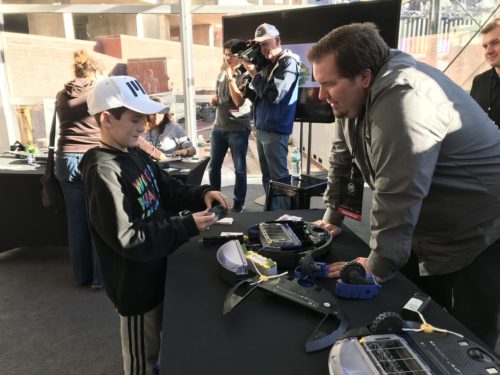


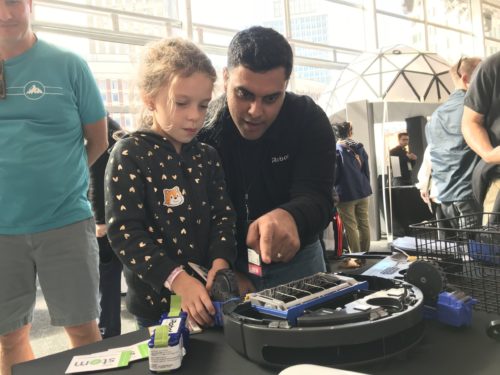
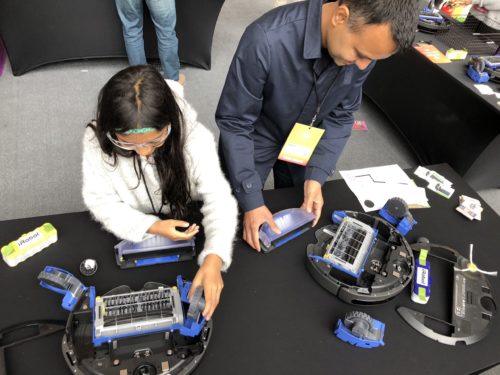 The robot brain
The robot brain Can anyone build a robot?
Can anyone build a robot?

 Take apart a robot
Take apart a robot

